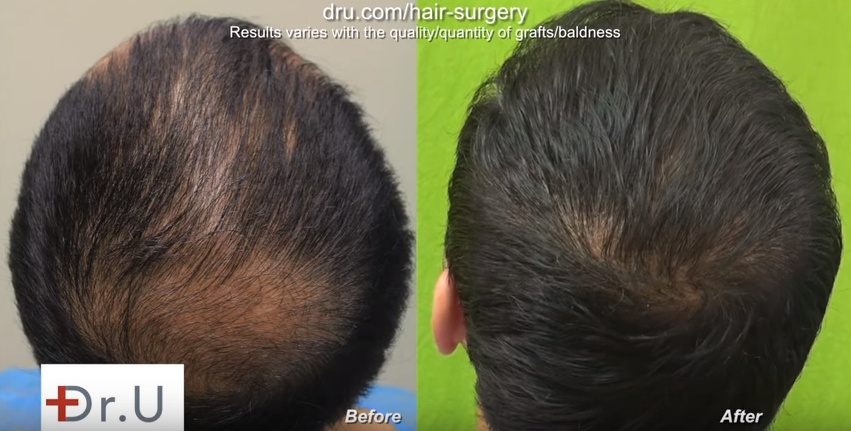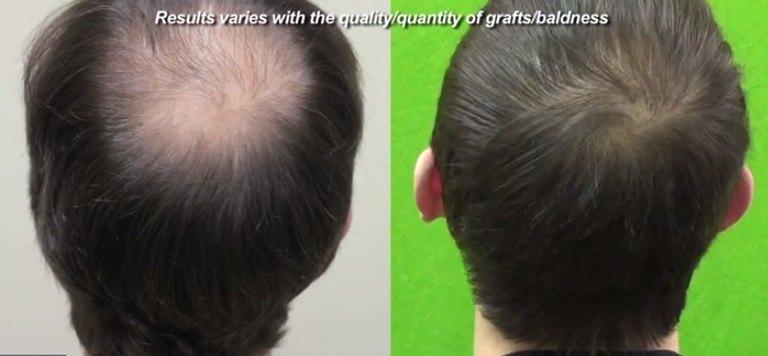For men who experience baldness:
- 95 percent of them have pattern baldness as the cause
- Two-thirds of men will suffer from it by the age of 35, 85 percent by the age of 50
- 25 percent of these men will experience hair loss from male pattern baldness by the age of 21
Crown hair restoration is an important aspect of a hair transplant. The crown is the highest rear point of the head. Even minimal hair loss in this area is highly visible to others and difficult to hide.
UGraft Hair Restoration for Addressing Crown Hair Loss
The crown is a semi-circular area just behind the summit of the skull. It begins where the top of the head curves downward to the back and ends just above the occipital bone. When restoring hair loss in the crown, surgeons must consider:
- The whorl
- Size
The Whorl
Hair growth at the crown grows in a clockwise or counterclockwise pattern away from a central point. The axis is not always directly in the middle of the crown, and individuals have different growth patterns. Some individuals have two whorls. Each person’s whirl is as individualized as a fingerprint.
Hair restoration of the crown is complex since it serves as the scalp’s merging place. Hair grows forward from the top of the head; hair grows toward the nape on the back of the head. Hair growth is in a circular pattern, so it’s also different on the sides. To create a natural-looking whorl during restoration, surgeons must use care vision and artistry.
Crown Size
The size of the crown also differs in individuals. For those with a larger crown and more hair loss, it may require many more grafts than a mid-top or hairline restoration.
Transplants traditionally use only donor hair from the head, which only allows for 5,000 to 7,000 follicles as it donor supply. A severely bald person can transplant only a tenth of lost hair, leading to poor coverage. Body hair transplantation (BHT) using the UGraft, also known as body hair to head transplant, uses non-head hair and transplants it to recipient areas.

Future Surgeries
Patients who lack sufficient donor hair on the head were once unable to achieve full coverage with transplantation. With BHT, the donor area expands since hair can be harvested from the beard, shoulders, chest, stomach, arms, and legs.
Also, if a patient continues to lose hair years post the first hair transplant, a second surgery may be needed. This also requires an additional donor supply, which BHT alleviates. Dr. Umar specialized in advanced FUE and BHT procedures with his uGraft method, also known as the Umar Procedure. Unlike surgical procedures of the past, Dr. Umar’s patients have stunning results with minimal pain, lack of starring, less downtime and the superior long-lasting replacement of hair.

